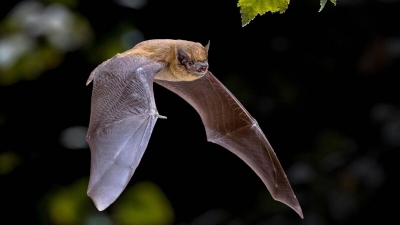
Echolocation, a physiological process for locating distant or invisible objects (such as prey) by means of sound waves reflected back to the emitter (such as a bat) by the objects. Echolocation is used for orientation, obstacle avoidance, food procurement, and social interactions.
Echolocation is known to be employed by most bats (all members of the suborder Microchiroptera and one genus, Rousettus, of the Megachiroptera); most, if not all, toothed whales and porpoises (Odontoceti), but apparently no baleen whales; a few shrews; and two kinds of birds, the oilbird (Steatornis caripensis) of northern South America and certain cave swiftlets (Collocalia) of Southeast Asia.
In microchiropteran bats and some toothed whales, a mutated form of a protein called prestin increases their sensitivity to high-frequency sounds and thereby facilitates the detection of return echoes. The nearly identical molecular structure of the Prestin gene in these animals, which differs from the structure of the Prestin gene found in all other mammals, is an example of convergent evolution, in which the two groups independently evolved the same form of the echolocating protein in response to similar environmental pressures.
Credit : Britannica
Picture Credit : Google




